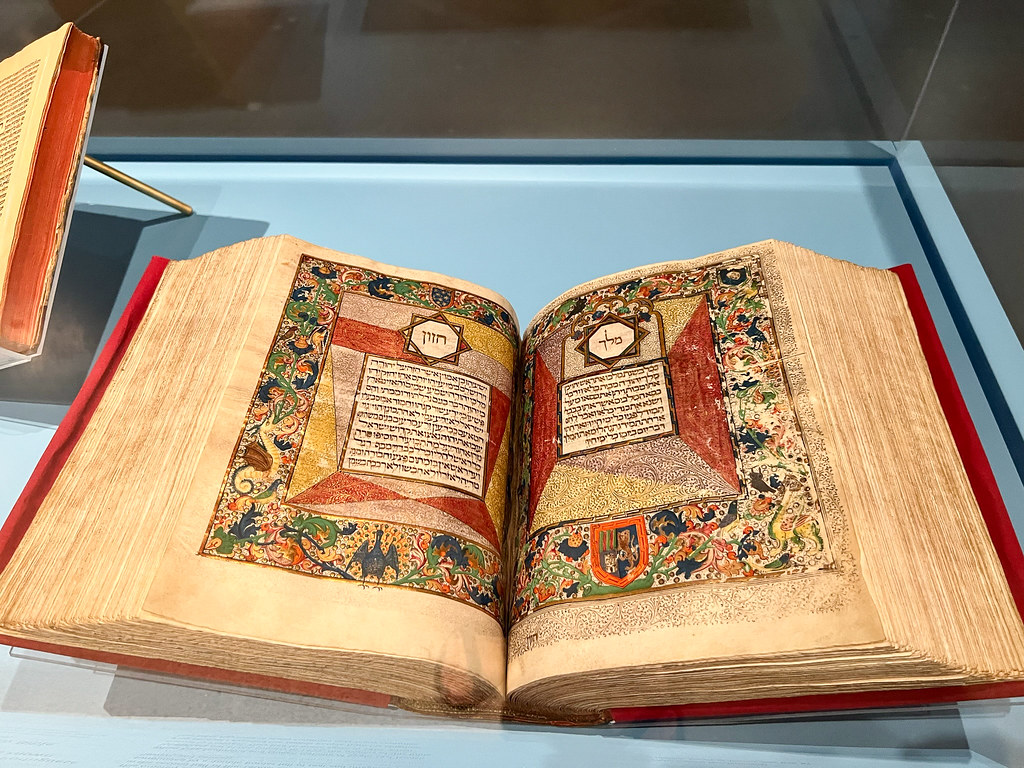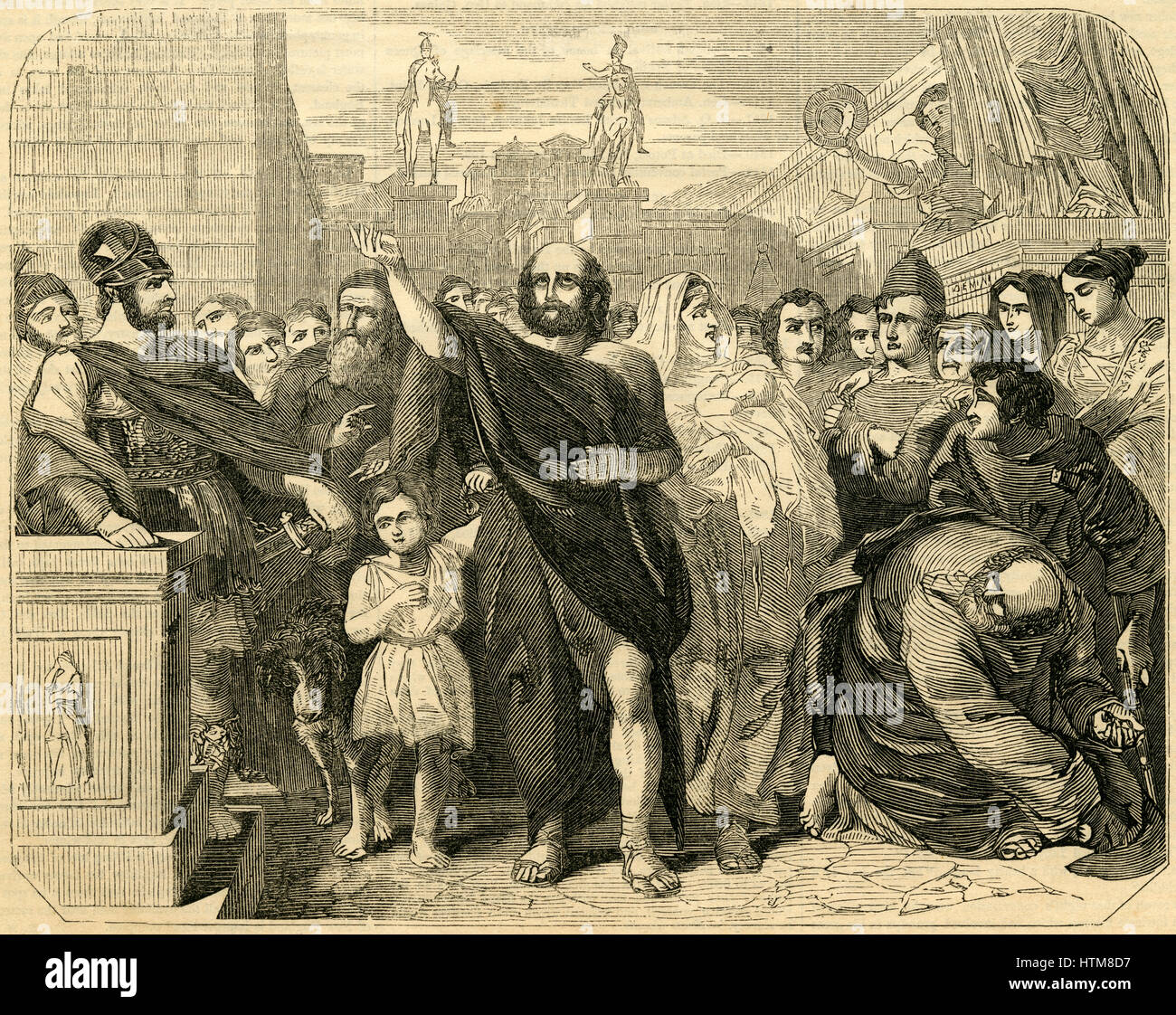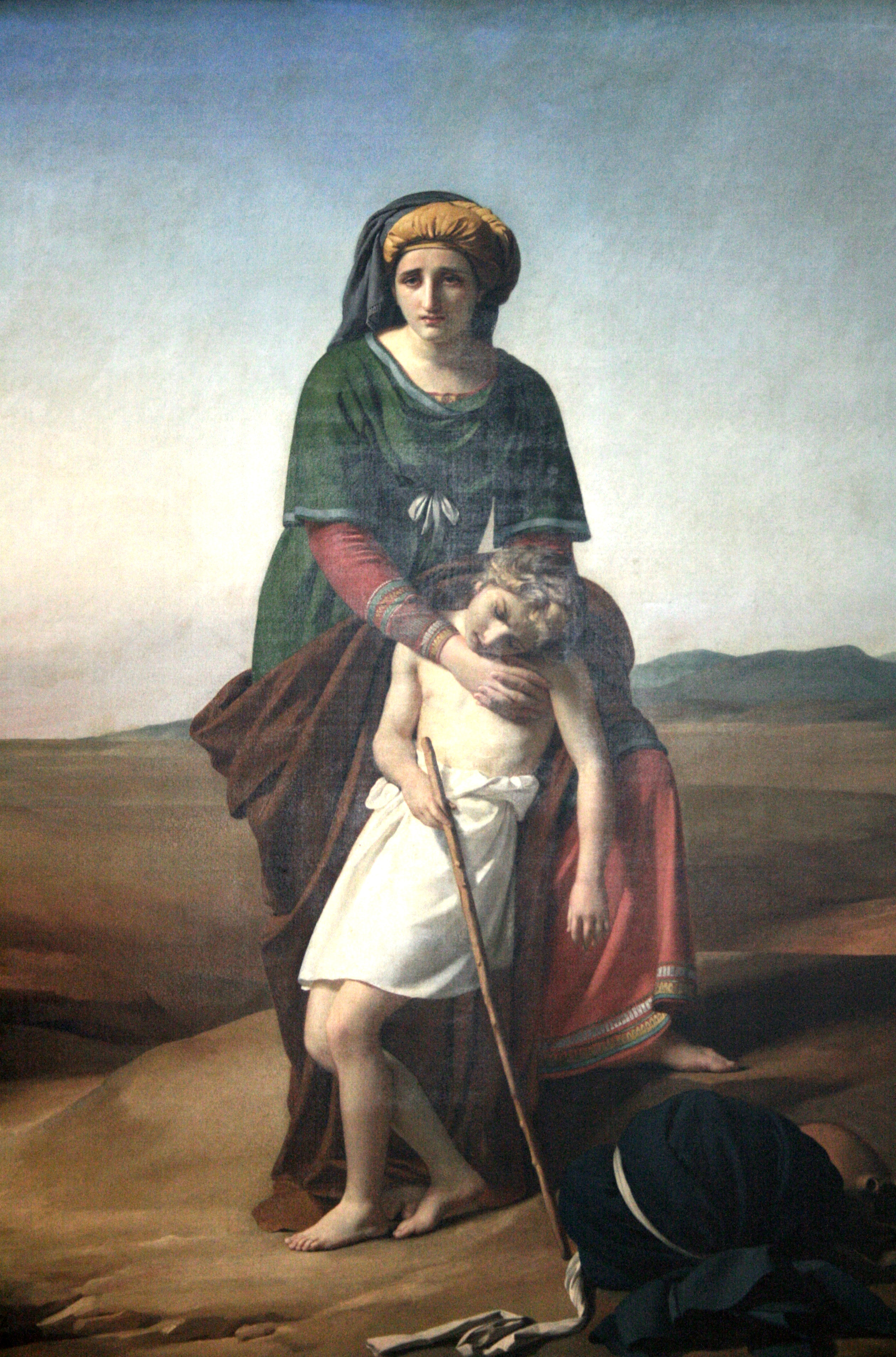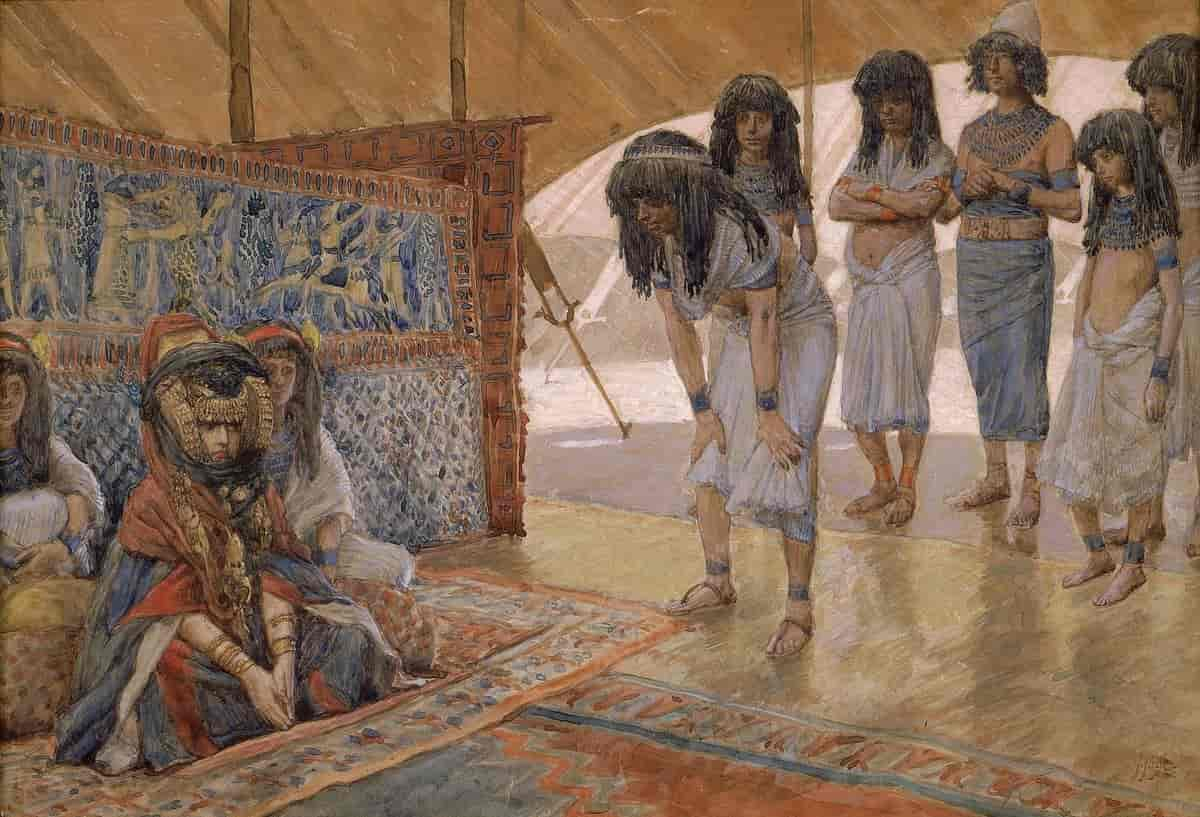
Sarah, initially known as Sarai, stands as a monumental figure within Abrahamic religions, revered as a matriarch, prophet, and a cornerstone of faith traditions. Her narrative, primarily unfolding within the Hebrew Bible, portrays a woman of deep piety, renowned for her hospitality and striking beauty, who became the wife of Abraham and the mother of Isaac. Across Judaism, Christianity, and Islam, Sarah’s character is consistently depicted with similar reverence, highlighting her significant contributions to the lineage and spiritual foundations of these faiths.
Her life story is a tapestry woven with themes of faith, divine promise, human doubt, and the challenges of early patriarchal society. From her origins in Ur to her eventual burial in Hebron, Sarah’s journey is marked by profound personal experiences, divine interventions, and complex family dynamics. Her enduring legacy is celebrated through various feast days in the Catholic, Coptic Orthodox, and Eastern Orthodox Churches, underscoring her universal spiritual importance.
This in-depth article will meticulously explore key events and interpretations of Sarah’s life, drawing exclusively from the provided biblical and scholarly context. We will examine her evolving identity, her pivotal relationships, the divine promises that shaped her destiny, and the diverse religious and historical perspectives that continue to illuminate her multifaceted role. Through a careful analysis of her narrative, we aim to provide a comprehensive understanding of this influential biblical matriarch.
1. **Sarah: A Foundational Figure in Abrahamic Religions**Sarah, originally Sarai, is presented as a central biblical matriarch, a prophet, and a major figure whose influence resonates deeply across Judaism, Christianity, and Islam. These Abrahamic faiths, while possessing distinct theological frameworks, largely align in their depiction of her character. She is consistently portrayed as a pious woman, a quality that underpins her spiritual significance and makes her an exemplary figure within these traditions.
Beyond her piety, Sarah is also celebrated for her hospitality, a virtue highly valued in ancient Near Eastern cultures and often associated with righteous individuals in biblical narratives. Her beauty is another recurring attribute, noted specifically in the biblical text and influencing several key events in her life story. This combination of spiritual devotion, social grace, and physical allure contributes to her prominent and memorable profile.
As the wife of Abraham, a foundational patriarch, and the mother of Isaac, Sarah holds an indispensable position in the lineage that is central to these religions. Her role as Isaac’s mother is particularly crucial, as Isaac represents the continuation of the divine covenant and the fulfillment of God’s promise to Abraham. Her story is not merely a historical account but a spiritual blueprint, offering lessons on faith, perseverance, and divine providence that continue to inspire adherents worldwide.

2. **From Sarai to Sarah: The Significance of Renaming**Initially, this foundational biblical figure was known by the name Sarai. This name, along with her later name Sarah, is understood by most modern scholars to originate from the same root, SRR, both conveying the meaning of “important woman.” This etymological connection underscores her inherent significance from the outset of her narrative, even before her divine renaming.
The transition from Sarai to Sarah is a pivotal moment in her biblical story, occurring in Genesis 17 during the narrative of the covenant of the pieces. At this time, Yahweh not only promises Abram and Sarai a son but also renames Abram as Abraham. This renaming signifies a profound transformation and a renewed covenantal relationship with God, marking a new chapter in their lives and destinies.
Her new name, Sarah, is often translated as “princess” or “a woman of high rank,” further emphasizing her elevated status and destiny as the mother of nations, a promise directly tied to the covenant. According to a minority of scholars, the name Sarai might derive from the root SRY, meaning “contend with” or “withstand,” drawing a parallel to the name Israel. Regardless of the exact linguistic root, the renaming is consistently understood as an act of divine blessing and a re-affirmation of her crucial role in God’s plan.

3. **Family Background and Lineage**Sarah’s family background is central to understanding her place within the patriarchal narratives of the Hebrew Bible. The Book of Genesis 20:12 explicitly states Abraham’s description of Sarah as “my father’s daughter, but not my mother’s.” This statement, made in conversation with King Abimelech of Gerar, identifies her as Abraham’s half-sister. Such unions, though later prohibited in Leviticus 18:9, were apparently a reality in their era.
However, biblical commentators offer alternative interpretations regarding her familial ties. Some scholars identify Sarah with Iscah, who is mentioned in Genesis 11:29 as a daughter of Abraham’s brother Haran. If this identification is correct, then Sarah would be Abraham’s niece rather than his half-sister. This perspective suggests that Abraham’s claim of her being his half-sister might have been a strategic untruth, intended to protect himself by obscuring their marital status.
Further rabbinic literature, specifically the Talmud, also identifies Sarai with Iscah, reinforcing the notion that she was the daughter of Abraham’s deceased brother Haran. In this interpretation, Sarah is seen as Abraham’s niece and the sister of Lot and Milcah. While Genesis 20:12 speaks of her as “my father’s daughter,” rabbinic commentary asserts that “daughter” can extend to a granddaughter, thereby validating the “sister” designation for a niece in such contexts. These various interpretations highlight the complex and sometimes debated nature of her exact lineage within ancient traditions.
Read more about: Seriously, Where Did These Go? 13 Haunting ‘Beloved’ Mysteries We Need Answers To!

4. **The Journey from Ur to Canaan**The journey of Sarah, then Sarai, began with her family’s departure from Ur of the Chaldees, a city believed to be in present-day Iraq. This initial movement was led by Terah, Sarai’s father-in-law and Abraham’s father, along with Abram (Abraham as he was then called) and their nephew Lot. Their intended destination was Canaan, a land that would become central to their destiny.
However, the group halted their journey in a place named Haran, situated in present-day Turkey. Terah remained in Haran until his death at the advanced age of 205 years. It was during this period, or shortly after Terah’s death, that a pivotal divine command was issued to Abram. Yahweh instructed Abram to leave his country, his kindred, and his father’s house, promising to show him a specific land.
Following this divine command, Abram, accompanied by his wife Sarai, his nephew Lot, and all the wealth and slaves they had acquired, embarked on the next leg of their journey. They traveled to Shechem in Canaan, marking a significant step in their relocation and the fulfillment of God’s promise. Abram was 75 years old at the time of this transformative departure, signifying the beginning of their new life in a promised land.
Read more about: Stephen: 14 Mind-Blowing Revelations About a Name That Shaped History

5. **The Famine in Canaan and the Egyptian Encounter**Upon their arrival in Canaan, Abram and Sarai faced immediate hardship in the form of a severe famine across the land. This dire environmental condition necessitated a further journey south, leading Abram and Lot, along with their households, to travel to Egypt in search of sustenance. This relocation brought them into contact with a powerful foreign kingdom, introducing new dangers and moral dilemmas.
As they approached Egypt, Abram expressed a profound fear for his life, recognizing Sarai’s extraordinary beauty. He anticipated that the Egyptians, upon seeing her, would desire her for themselves and, in order to possess her, would kill him. To circumvent this perceived threat, Abram instructed Sarai to identify herself only as his sister. His reasoning was explicit: “Say you are my sister, so that I will be treated well for your sake and my life will be spared because of you.”
Indeed, upon their arrival and Sarai’s presentation as Abram’s sister, she was brought before Pharaoh. The king, captivated by her beauty, took her into his palace. In return, Pharaoh bestowed numerous gifts and marks of distinction upon Abram, including wealth and slaves. However, this act resulted in divine intervention; God afflicted Pharaoh’s household with great plagues. Pharaoh eventually realized that Sarai was Abram’s wife and, consequently, demanded that they leave Egypt immediately, demonstrating the consequences of Abraham’s deception.

6. **The Challenge of Childlessness and Hagar’s Introduction**A significant and enduring challenge in Sarah’s life was her inability to conceive a child. After ten years of living in Canaan, she remained childless, a condition that carried immense social and personal weight in their cultural context. This prolonged barrenness presented a direct impediment to the fulfillment of God’s promise to make Abraham a great nation, as a direct heir was crucial for the covenant’s continuation.
In response to her barrenness, Sarai initiated a pragmatic, albeit complex, solution that was common in the ancient Near East. She suggested to Abram that he have a child with her Egyptian handmaiden, Hagar. Her reasoning was that through Hagar, she might “build a family,” implying that a child born to a handmaiden could be legally considered the child of the mistress. Abram agreed to this arrangement, leading to Hagar’s pregnancy.
This decision, however, soon led to considerable tension and conflict within the household. Once Hagar conceived, her demeanor toward Sarai reportedly changed, causing Sarai to complain to Abram that the handmaid no longer respected her. The situation escalated to the point where Hagar fled from her mistress, seeking refuge in the desert. She only returned after receiving divine consolation and instruction from angels, highlighting the profound emotional and social consequences of Sarai’s solution to her childlessness.

7. **The Divine Promise of Isaac and Sarah’s Initial Reaction**The narrative of Sarah’s life reached a pivotal moment when Abram was ninety-nine years old. At this time, God declared Abram’s new name, Abraham, signifying his destiny as “a father of many nations,” and established the covenant of circumcision. Concurrently, God also gave Sarai the new name “Sarah” and blessed her, reassuring Abraham that she, too, would bear a son. This divine assurance directly addressed the long-standing challenge of their childlessness.
Not long after this profound declaration, Abraham and Sarah received a visit from three mysterious men. One of these visitors delivered a concrete prophecy: upon his return the following year, Sarah would have a son. Sarah, positioned at the entrance of the tent, overheard this extraordinary announcement. Her immediate, human reaction to this news, given her advanced age and Abraham’s, was one of private amusement.
She “laughed to herself” at the prospect of conceiving and bearing a child at their advanced ages, a natural human response to what seemed biologically impossible. The visitor, aware of her private amusement, inquired of Abraham why Sarah had laughed at the idea of bearing a child. The inquiry carried an implied message of divine capability, emphasizing that Sarah’s age was of no consequence to God’s power. This moment of laughter not only foreshadowed the name of their promised son, Isaac (meaning “laughter”), but also underscored the human tendency to doubt divine promises when faced with apparent impossibilities.

8. **The Banishment of Hagar and Ishmael**Following Isaac’s birth, domestic tension heightened within Abraham’s household. The biblical narrative reports that Sarah, after Isaac was weaned, observed Ishmael, then a teenager, mocking her son. This act deeply troubled Sarah.
Sarah requested Abraham banish both Hagar, her Egyptian handmaiden, and their son Ishmael. This demand caused Abraham distress, given Ishmael’s paternity. Divine counsel was sought and provided.
God instructed Abraham to comply with Sarah’s request, assuring him the divine covenant would continue through Isaac. Abraham then sent Hagar and Ishmael into the desert with provisions, marking their separation from his immediate family.

9. **The Encounter with King Abimelech of Gerar**Abraham and Sarah relocated to Gerar, a Philistine territory, after their divine encounter and before Isaac’s birth. There, Abraham again presented Sarah as his sister, a tactic used previously in Egypt. He feared local inhabitants might kill him to claim Sarah, whom he considered exceptionally beautiful.
King Abimelech, believing Sarah to be Abraham’s sister, took her into his palace. However, God intervened through a dream, warning Abimelech of impending death if he kept Sarah, and revealing her marital status. This divine intervention prevented unintentional transgression.
Abimelech confronted Abraham, questioning why he had risked such guilt upon his kingdom. Abraham defended his statement, explaining his fear for his life and asserting Sarah was indeed his half-sister: “And yet indeed she is my sister; she is the daughter of my father, but not the daughter of my mother; and she became my wife.”
Abimelech returned Sarah to Abraham, and presented Abraham with gifts, including livestock and servants, permitting him to settle anywhere in his lands. Abimelech further provided a thousand pieces of silver as Sarah’s public vindication. Abraham then prayed for Abimelech and his household, as God had afflicted the women with infertility due to Sarah’s temporary captivity.

10. **Sarah’s Death and Burial**Sarah died at 127 years of age. Following her death, Abraham purchased a plot of land near Hebron, specifically a cave, from Ephron the Hittite for her burial. This transaction secured the site.
This burial place became known as the Cave of the Patriarchs, also revered as the Sanctuary of Abraham in Islamic tradition. The acquisition marked a significant event, representing the first land owned by Israelites in Canaan, thus commencing the fulfillment of a covenantal promise.
Rabbinic literature includes legends linking Sarah’s death to Isaac’s attempted sacrifice. One narrative suggests Samael falsely informed Sarah of Isaac’s sacrifice, leading to her death by grief. Another version describes Satan, disguised, first falsely reporting the sacrifice, then, after initial grief, falsely reporting Isaac was alive, leading to her death from joy in Hebron. Abraham and Isaac reportedly discovered her death upon their return.
11. **Sarah in Other Biblical and Religious Texts**Sarah’s influence extends beyond Genesis, appearing in later Hebrew Bible texts and the New Testament. Isaiah 51:2 mentions her alongside Abraham as an ancestral figure, symbolizing the origins of the Israelite nation: “Look to Abraham your father, and to Sarah who bore you.”
The New Testament consistently commends Sarah for her faith and obedience. The First Epistle of Peter praises her for obeying her husband, while Hebrews 11:11, in its ‘hall of faith,’ includes her among Old Testament figures noted for their unwavering faith. These references cement her status within Christian tradition.
Further New Testament mentions are found in Romans and Galatians. Galatians 4 uses Sarah and Hagar allegorically to represent the old and new covenants. Sarah symbolizes the free woman and the heavenly Jerusalem, contrasting with Hagar, who embodies the slave woman and the covenant from Mount Sinai, distinguishing those born of promise from those born of slavery.
Read more about: The Enduring Craft of Acting: A Comprehensive Look at Its History, Techniques, and Societal Evolution

12. **Sarah in Judaism and Rabbinic Literature**In Judaism, Midrash and Aggadah extensively elaborate on Sarah’s life, portraying her as an exemplar of personal and religious excellence. This representation marks a shift from her minor role in earlier biblical and Second Temple literature.
The Talmud identifies Sarai with Iscah, the daughter of Abraham’s deceased brother Haran, making her Abraham’s niece. This interpretation reconciles Abraham’s claim in Genesis 20:12 that Sarah was ‘my father’s daughter,’ by explaining that ‘daughter’ could encompass a granddaughter, validating the ‘sister’ designation for a niece.
Genesis Rabbah details Sarah’s encounter with Pharaoh. It recounts that her prayers resulted in an angel striking Pharaoh each time he attempted to touch her. Pharaoh, impressed by these miracles, reportedly gave his daughter Hagar to Sarah as a slave, deeming it preferable for Hagar to serve in such a woman’s household.
Rabbinic accounts describe Sarah’s initial kindness towards Hagar, which later turned harsh after Hagar conceived and became disrespectful. Legends state that to prove her late-life conception, Sarah nursed all infants brought to Isaac’s weaning banquet, convincing guests. Genesis Rabbah adds that her house during her lifetime was always hospitable, featuring miraculously increased dough, a perpetual light, and a pillar of cloud over her tent entrance.
13. **Sarah in Islam**In Islamic tradition, Sarah, though not explicitly named in the Quran, is depicted similarly to her portrayal in Judaism and Christianity: a virtuous woman, Abraham’s kin and wife, and the mother of the prophet Isaac after years of barrenness. This reinforces her shared significance across Abrahamic faiths.
However, distinctions exist regarding her relationships. Islam presents Sarah not as Abraham’s sister, but as his first cousin, the daughter of Terah’s brother, Haran. Hagar is generally considered Abraham’s second wife, which often removes the element of hostility Sarah is sometimes depicted as having towards Hagar and Ishmael in other narratives.
The Quran recounts Sarah’s laughter upon receiving a divine message confirming her pregnancy. In this version, angels deliver the news to Abraham, with his wife standing nearby. Surah Hud 11:69-72 details her astonishment at conceiving in old age, echoing the biblical account.
Sarah is believed to be interred in the Cave of the Patriarchs, known as the Sanctuary of Abraham in Islamic tradition. This site in Hebron is revered by Muslims, Christians, and Jews, who traditionally hold it as the burial place of Abraham and Sarah, Isaac and Rebecca, and Jacob and Leah.
Read more about: Decoding the Universal Quartet: An In-Depth Journey Through the Enduring Significance of the Number Four Across Science, Culture, and History

14. **Historicity and Scholarly Debates**Sarah’s historicity, alongside other patriarchal and matriarchal figures, has been a central point of scholarly inquiry. In the early and mid-20th century, leading archaeologists and biblical scholars generally regarded these figures as either actual individuals or plausible composites from the ‘patriarchal age’ of the 2nd millennium BCE.
This view was significantly challenged in the 1970s by new arguments from scholars like Thomas L. Thompson and John Van Seters. They utilized archaeological evidence and ancient texts to contest historical claims. Thompson highlighted the lack of compelling evidence for a 2nd millennium BCE setting and noted that biblical texts often mirrored first-millennium societal conditions.
Van Seters concluded that the patriarchal stories’ names, social context, and messages strongly indicated they were literary constructions of the Iron Age. By the early 21st century, archaeologists largely converged on the view that it was unlikely to find historical context supporting the patriarchs and matriarchs as credible historical figures.
Further scholarly debate surrounds the ‘wife-sister’ narratives, which appear three times in Genesis. Scholars discuss the relationships among these accounts, specifically those involving Abraham and Sarah with Pharaoh (Genesis 12-13) and King Abimelech (Genesis 20), and Isaac and Rebecca with a different King Abimelech (Genesis 26). Some suggest Genesis 12-13 is the oldest, with others being later interpretations.
Interpretations of Abraham’s claim that Sarah was his sister vary. Emanuel Feldman (1965), citing Albright’s Nuzu archaeology interpretation, proposed ‘sister’ was a legal title for a wife, denoting a sacred marriage. Most archaeologists, however, dispute this, suggesting the opposite: that sisters were sometimes titled ‘wife’ to elevate their status. Savina Teubal’s ‘Sarah the Priestess’ posits no incest taboo, as Sarah was Abraham’s half-sister by a different mother. These diverse perspectives underscore the ongoing, complex scholarly efforts to interpret Sarah’s multifaceted biblical narrative.
Read more about: The Transformative Journey of Paul the Apostle: A Deep Dive into His Life, Conversion, and Enduring Theological Legacy
Sarah’s narrative transcends a simple historical record, serving as a foundational story with profound cultural and religious resonance. Her journey of divine promise, human doubt, and ultimate fulfillment, alongside her portrayals across religious traditions and continued scholarly analysis, solidifies her enduring legacy. She remains a potent symbol of faith and perseverance, and her complex story continues to illuminate the intricacies of human-divine interaction within the Abrahamic heritage.





